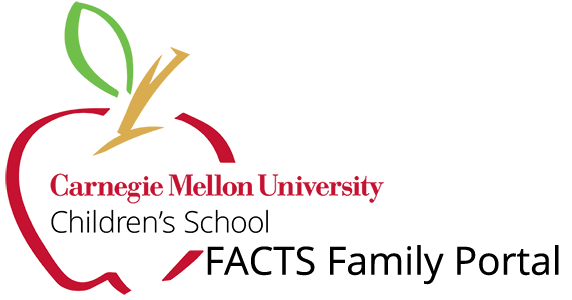Indoor Learning Centers
Each classroom is arranged into a variety of activity centers. The children independently choose from among the centers during free choice and activity time. The centers that are available to the children may vary from day to day. Sometimes the centers are open to the children to explore freely. Other times a teacher may coordinate an activity within a center.
Art and Writing Center

When children pick up a marker or crayon or paintbrush and use it to add colors, lines and shapes to a piece of paper, they are doing so much more than just filling that empty spot on the refrigerator. As children create, they make their ideas come alive and then have the opportunity to display and share their pride in their work (self-esteem and independence). Friends collaborate on projects and have to wait for and share materials (interaction and cooperation). Children's drawing and painting can tell a story and through manipulating implements, they develop hand and arm strength that will help when they begin writing (communication and physical development). Concepts of colors, shapes, lines and representation are made more concrete (discovery and exploration). Most notably, the children develop their artistic expression and appreciation while they employ various media, observe others' methods and products, and recognize their work in classroom displays.
Block Center

Blocks are perhaps the most recognizable play thing in an early childhood classroom, and they have earned that distinction because of the many ways they contribute to a child's growth. The frequent, "Look what I built!" signals children’s pride in their unique creation (artistic expression and self-esteem & independence). Children explore concepts like balance, patterns and shapes as they manipulate the blocks (discovery and exploration). As children build and inevitably knock over their own or another friend's structure, they have the opportunity to ask for help, let another child know that they don't want them to knock over their building, or include others in their play (communication and interaction & cooperation). Fine motor and gross motor skills are developed while they stack, balance, and maneuver the blocks while coordinating their own arms, fingers, and bodies (physical development).
Dramatic Play Center
 Young children get great joy from putting on costumes and transforming into doctors, nurses, construction workers, dancers, teachers and grocery store workers. Besides the fact that this type of play is just plain fun, it is also an important avenue for children's learning and development. When a child puts on a doctor's coat and stethoscope (self-esteem and independence), she can then talk to her patients and listen to why they have come to her office (communication). She can scribble/write on a clipboard and then take care of her patient by giving medicine, checking a heartbeat, or putting on a band aid (interaction and cooperation). Children who are engaged in dramatic play have the opportunity to use and develop an understanding of the vocabulary and concepts introduced by the teachers at circle time (discovery and exploration). Just about everything a child does helps with physical development, from scribbling on a clipboard to putting on a stethoscope and using it to check a friend's heartbeat.
Young children get great joy from putting on costumes and transforming into doctors, nurses, construction workers, dancers, teachers and grocery store workers. Besides the fact that this type of play is just plain fun, it is also an important avenue for children's learning and development. When a child puts on a doctor's coat and stethoscope (self-esteem and independence), she can then talk to her patients and listen to why they have come to her office (communication). She can scribble/write on a clipboard and then take care of her patient by giving medicine, checking a heartbeat, or putting on a band aid (interaction and cooperation). Children who are engaged in dramatic play have the opportunity to use and develop an understanding of the vocabulary and concepts introduced by the teachers at circle time (discovery and exploration). Just about everything a child does helps with physical development, from scribbling on a clipboard to putting on a stethoscope and using it to check a friend's heartbeat.
Make Shop
 Making, or making things with one’s hands, or tinkering is fast becoming a part of the culture in many educational settings. Creative problem solving, innovation, media literacy, and technology literacy are all a part of the Maker Movement. Work and play in a maker space encourages a school’s students and teachers to play and engage with STEAM areas (Science, Technology, Engineering, Arts, and Math). The Carnegie Mellon University Children’s School seeks to expand the benefits of child-led play with open-ended materials in a Make Shop space within the school. The Make Shop is a flexible workspace where both exploratory and product-oriented experiences nurture independence and the creative spirit. Educators work together to allow for time and access to materials in the Make Shop. In the space, small groups of children are given time to practice design thinking skills as they explore how objects work, how they are made, and how they can be used or repurposed. Inquiry activities and projects include: learning to use hand tools and hardware; building with Legos, magnet blocks and wood; experimenting with ramps and runs; practicing basic sewing skills; exploring light, color and music; creating props for play; working in different ways with clay and paper; and problem solving with simple machines and circuits.
Making, or making things with one’s hands, or tinkering is fast becoming a part of the culture in many educational settings. Creative problem solving, innovation, media literacy, and technology literacy are all a part of the Maker Movement. Work and play in a maker space encourages a school’s students and teachers to play and engage with STEAM areas (Science, Technology, Engineering, Arts, and Math). The Carnegie Mellon University Children’s School seeks to expand the benefits of child-led play with open-ended materials in a Make Shop space within the school. The Make Shop is a flexible workspace where both exploratory and product-oriented experiences nurture independence and the creative spirit. Educators work together to allow for time and access to materials in the Make Shop. In the space, small groups of children are given time to practice design thinking skills as they explore how objects work, how they are made, and how they can be used or repurposed. Inquiry activities and projects include: learning to use hand tools and hardware; building with Legos, magnet blocks and wood; experimenting with ramps and runs; practicing basic sewing skills; exploring light, color and music; creating props for play; working in different ways with clay and paper; and problem solving with simple machines and circuits.
Sensory Centers
 Sometimes it is hard to gauge how valuable a child's experience really was. We can't always observe how the brain is processing information or how the body is interpreting stimuli. But if we see a child whose shirt is soggy, pants are muddy, and hands are sandy, then we know that something substantial was happening! There is something about water and sand and light that calls to many children, and the tables that feature these sensory experiences are often the vehicles for encouraging independent play. Children are also given the freedom to engage in the type of play they prefer (self-esteem and independence). At these tables, toys and space are limited so conflict resolution, sharing and collaboration (interaction and cooperation) are skills that are naturally taught and developed. These skills are more successfully realized as they become more competent communicators, like being able to say, "No, I'm using this right now." or "Do you want to dig for treasure with me?". Thematic information is incorporated and processed through play in these tables. Children become paleontologists digging in the sand for dinosaur bones or use buckets, brooms and pom-poms to demonstrate how some whales siphon krill through their baleen (discovery and exploration). Fine motor skills, including eye-hand coordination, are honed while pouring, scooping, filling and building (physical development). The "messy" tables provide opportunities for artistic expression and appreciation as well. Children can make designs in and mold sand, create artwork with colorful water, and design structures using blocks.
Sometimes it is hard to gauge how valuable a child's experience really was. We can't always observe how the brain is processing information or how the body is interpreting stimuli. But if we see a child whose shirt is soggy, pants are muddy, and hands are sandy, then we know that something substantial was happening! There is something about water and sand and light that calls to many children, and the tables that feature these sensory experiences are often the vehicles for encouraging independent play. Children are also given the freedom to engage in the type of play they prefer (self-esteem and independence). At these tables, toys and space are limited so conflict resolution, sharing and collaboration (interaction and cooperation) are skills that are naturally taught and developed. These skills are more successfully realized as they become more competent communicators, like being able to say, "No, I'm using this right now." or "Do you want to dig for treasure with me?". Thematic information is incorporated and processed through play in these tables. Children become paleontologists digging in the sand for dinosaur bones or use buckets, brooms and pom-poms to demonstrate how some whales siphon krill through their baleen (discovery and exploration). Fine motor skills, including eye-hand coordination, are honed while pouring, scooping, filling and building (physical development). The "messy" tables provide opportunities for artistic expression and appreciation as well. Children can make designs in and mold sand, create artwork with colorful water, and design structures using blocks.
Manipulative Center
 At the manipulative center, the children will find a variety of items designed to promote the development of fine motor and cognitive skills. These include puzzles, playdough, peg boards, geoboards, links, gears, and beads & laces, just to name a few. The manipulatives available to the children are rotated on a regular basis and are often connected to the current themes of study.
At the manipulative center, the children will find a variety of items designed to promote the development of fine motor and cognitive skills. These include puzzles, playdough, peg boards, geoboards, links, gears, and beads & laces, just to name a few. The manipulatives available to the children are rotated on a regular basis and are often connected to the current themes of study.
Kitchen
 The kitchen at the Children’s School offers the perfect venue for teaching young children about the practical life skills needed in food preparation. Since the school’s inception in 1968, children and educators have worked together to integrate food, nutrition and cooking into the curriculum. Until the early 1990’s, the Kindergarten children even worked together in the kitchen to cook and clean up lunch on a daily basis! Today, small groups of children work with an educator in the kitchen with real tools to learn to chop, measure, mix, and enjoy new foods. Remodeled in 2006 by a generous donation from the DSF Charitable Foundation as well as family contributions, the kitchen space is arranged with a low table for 6-8 children to work with an educator. Other amenities include a refrigerator, freezer, stove, microwave, child sized and adult sized sinks, washer, and dryer.
The kitchen at the Children’s School offers the perfect venue for teaching young children about the practical life skills needed in food preparation. Since the school’s inception in 1968, children and educators have worked together to integrate food, nutrition and cooking into the curriculum. Until the early 1990’s, the Kindergarten children even worked together in the kitchen to cook and clean up lunch on a daily basis! Today, small groups of children work with an educator in the kitchen with real tools to learn to chop, measure, mix, and enjoy new foods. Remodeled in 2006 by a generous donation from the DSF Charitable Foundation as well as family contributions, the kitchen space is arranged with a low table for 6-8 children to work with an educator. Other amenities include a refrigerator, freezer, stove, microwave, child sized and adult sized sinks, washer, and dryer.
Loose Parts
 When a child engages in loose parts play, they experience endless ways to create and explore. Through open ended play, the children are given the chance to discover ways to put together, take apart, redesign, align and more. The children can be heard communicating their ideas and working together to construct a creation that inspires great pride. Loose part materials ranging from natural to synthetic, large or small, are rotated often and moved around the classroom to encourage the imagination and creation to take flight. A small example of loose part materials seen in the preschool are buttons, spools, rocks, shells, tree cookies, scarves, tubes, lids, sticks, and bowls.
When a child engages in loose parts play, they experience endless ways to create and explore. Through open ended play, the children are given the chance to discover ways to put together, take apart, redesign, align and more. The children can be heard communicating their ideas and working together to construct a creation that inspires great pride. Loose part materials ranging from natural to synthetic, large or small, are rotated often and moved around the classroom to encourage the imagination and creation to take flight. A small example of loose part materials seen in the preschool are buttons, spools, rocks, shells, tree cookies, scarves, tubes, lids, sticks, and bowls.
Science Center
 When providing children with the chance to explore, touch, and observe real and natural items, you are inspiring a world of wonder. Through investigation of items found both locally and afar, children are discovering and exploring the ins and outs of how things work, grow, and more. Objects have included leaves, acorns, seashells, bones, fruits, vegetables, and flowers. Tadpoles, frogs, fish, and butterflies are frequently available to observe.
When providing children with the chance to explore, touch, and observe real and natural items, you are inspiring a world of wonder. Through investigation of items found both locally and afar, children are discovering and exploring the ins and outs of how things work, grow, and more. Objects have included leaves, acorns, seashells, bones, fruits, vegetables, and flowers. Tadpoles, frogs, fish, and butterflies are frequently available to observe.
Math Center
 The Math Center allows the children to practice early math skills including one-to-one correspondence, counting, patterning, sorting, measuring, and graphing. Various games, manipulatives and materials are rotated on a regular basis.
The Math Center allows the children to practice early math skills including one-to-one correspondence, counting, patterning, sorting, measuring, and graphing. Various games, manipulatives and materials are rotated on a regular basis.
Library Center

A quiet and cozy spot in the classroom is set up to provide the children a chance to peruse and read books with friends or by themselves. Books in the library include theme related fiction and non-fiction, picture books, board books, big books, and class made books. When a child explores a book in the library, they are learning how to handle a book properly, point to and identify objects, such as numbers, letters, or animals, all while working on language and communication skills.




